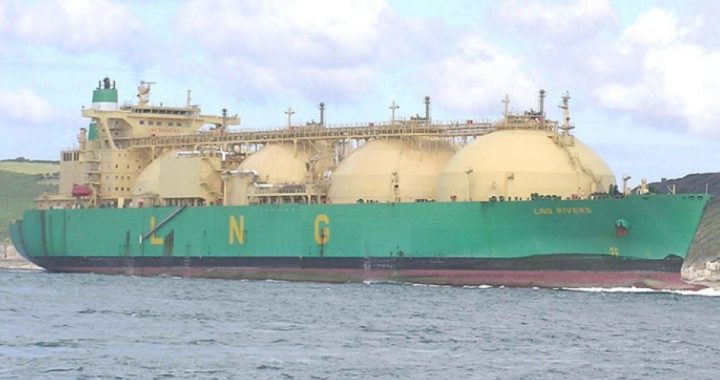
On April 14, the Department of Energy’s Federal Energy Regulatory Commission published a remarkable summary of its recent approvals for private energy companies to build LNG (liquid natural gas) export plants along the East and Gulf Coasts.
What’s remarkable is that for decades the DOE has bought the argument that exporting LNG to customers around the world might jeopardize its supply here in the United States. It also bought the argument that allowing private producers to ship their product overseas would only encourage more fracking here with its claimed attendant but unproven dangers to the environment.
That the DOE is giving approval to LNG export facilities is proof that reality has finally replaced ideology at the agency, at least for the moment. As expected, the head bureaucrat in charge, U.S. Energy Secretary Ernest Moniz, is taking all the credit:
We anticipate becoming big players, and I think we’ll have a big impact. [With our approval of these plants] we’re going to influence the whole global LNG market.
Five LNG export plants are already under construction: Sabine and Hackberrry, Louisiana; Freeport and Corpus Christi, Texas; and Cove Point, Maryland. The private capital involved is monstrous: The Cove Point facility investment is $3.8 billion, while the Sabine Pass plant will pump $10 billion into the local economy. Sempra Energy is investing $10 billion into the Hackberry project, while the Freeport plant will require $11 billion of private capital. Construction at a second Sabine Pass plant is about to begin.
And this is just the beginning. As Steve Mueller, head of Southwestern Energy, the fourth largest producer of natural gas in the country, put it: “We’re just fifteen years into a 150-year process.” According to the American Chemistry Council more than $130 billion in new investment will pour into the corridor from Houston to New Orleans over just the next eight years.
Naysayers are questioning the move in light of the drop in oil prices, reducing the advantage LNG has in cost per unit of energy. But technology continues to race ahead of the drop in oil prices, making the equation favoring LNG remain increasingly attractive. Mueller called his company’s new technology “amazing,” noting that just eight years ago it took his company 17 days to drill a 2,600-foot deep natural gas well, while today it takes just six days to drill a 5,400-foot well.
Translation: Natural gas drillers can produce a third more natural gas today with just 280 rigs than they did in 2009 with 1,200 rigs.
The shale revolution continues to boggle the mind. In 2007, U.S. monthly natural gas production was just five BCF (billion cubic feet) per day. Today, thanks to fracking technology, monthly production is approaching 40 BCF every day, with no signs of any slowdown.
This is putting pressure on the DOE to allow that gas to be liquefied, put into enormous 1,000-foot long container ships, and shipped abroad where natural gas costs three to four times as much. For instance, natural gas sells for about $2.50 per million BTUs in the United States, but in Europe it’s $7 and in Asia $10, making it enormously profitable for producers to make these huge investments.
The arguments against granting these permits by environmentalists increasingly make little sense. For example, Kate DeAngelis, an anti-energy campaigner for Friends of the Earth, decried the Obama administration’s willingness to let the DOE move ahead with these approvals:
In supporting liquefied natural gas exports, President Obama is treating climate change like a game of peek-a-boo, opening his eyes to the harmful effects of carbon but closing them to the devastating disruption potential of methane.
Allowing more LNG exports completely counteracts President Obama’s expressed commitment to reduce emissions and protect the public health.
Facts don’t matter to DeAngelis, apparently. Using natural gas as an energy source puts out far fewer carbon emissions than does either oil or coal. And much of the LNG that will be shipped abroad will be used to replace coal-fired power plants.
Facts also don’t matter to Deb Nardone, director of the Sierra Club’s Beyond Natural Gas Campaign, who claimed:
Exporting LNG will mean more drilling and fracking, and that means more climate pollution, more risk of contaminated groundwater, and more threats to the health of people who live near gas wells.
There are other reasons to cheer the DOE’s change of heart. Increased LNG sales to Europe from the United States will weaken Russian President Vladimir Putin’s present chokehold on countries there currently relying on Russia to provide them with natural gas. Increases in investment here will mean more jobs here, and will continue — and likely accelerate — the return of the manufacturing industry to the United States, where costs now are lower than overseas. Coupled with reduced emissions worldwide, cheaper energy everywhere will benefit users and consumers across the globe.
As Margo Thorning, vice president and chief economist for the American Council for Capital Formation, put it, “The case for expediting export permits for U.S.-produced liquefied natural gas has moved from logical to compelling.” She added:
Given the compelling economic implications of letting America realize its potential as an LNG exporter, we do not have time to waste on faux environmental arguments.
As the DOE continues to grant LNG export permits (there are reportedly dozens of applications pending), the shift in the world’s energy equation can almost be felt underfoot. At the moment, OPEC member Qatar is the world’s largest LNG exporter. The Marcellus formation underneath Pennsylvania, all by itself, outproduces Qatar. As the DOE steps aside and lets the free market work its magic, the United States will resume its role as the world’s energy powerhouse. That role could continue for decades, perhaps even generations, to come.
A graduate of an Ivy League school and a former investment advisor, Bob is a regular contributor to The New American magazine and blogs frequently at www.LightFromTheRight.com, primarily on economics and politics.



